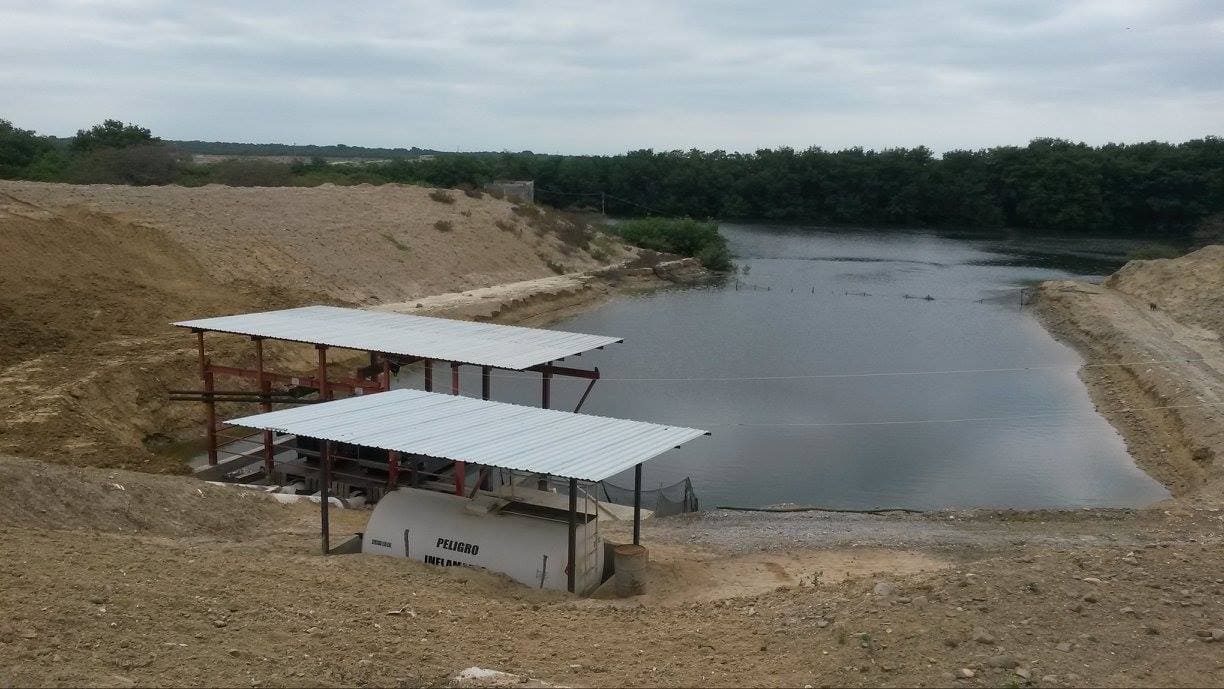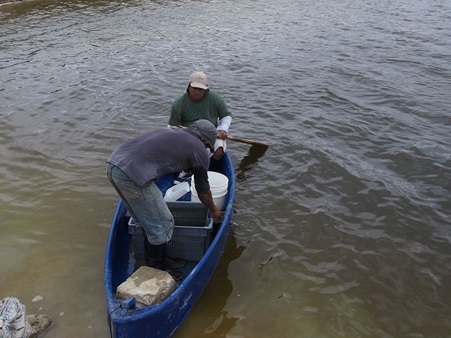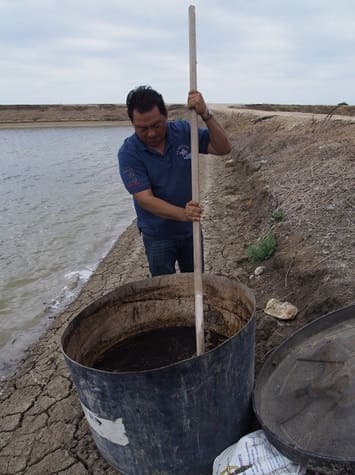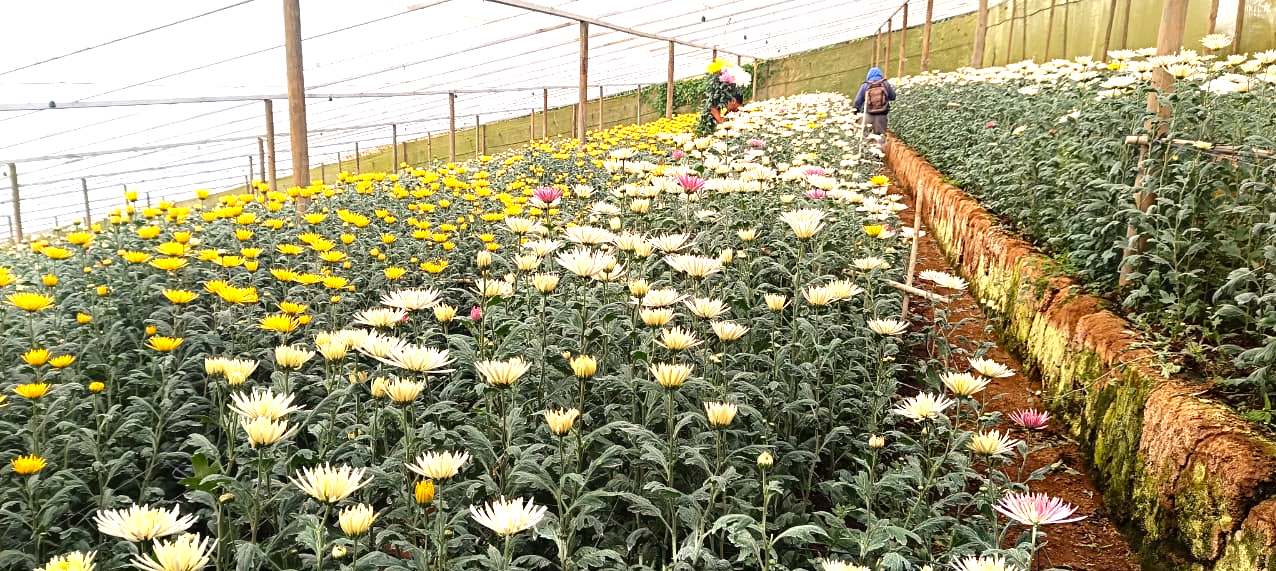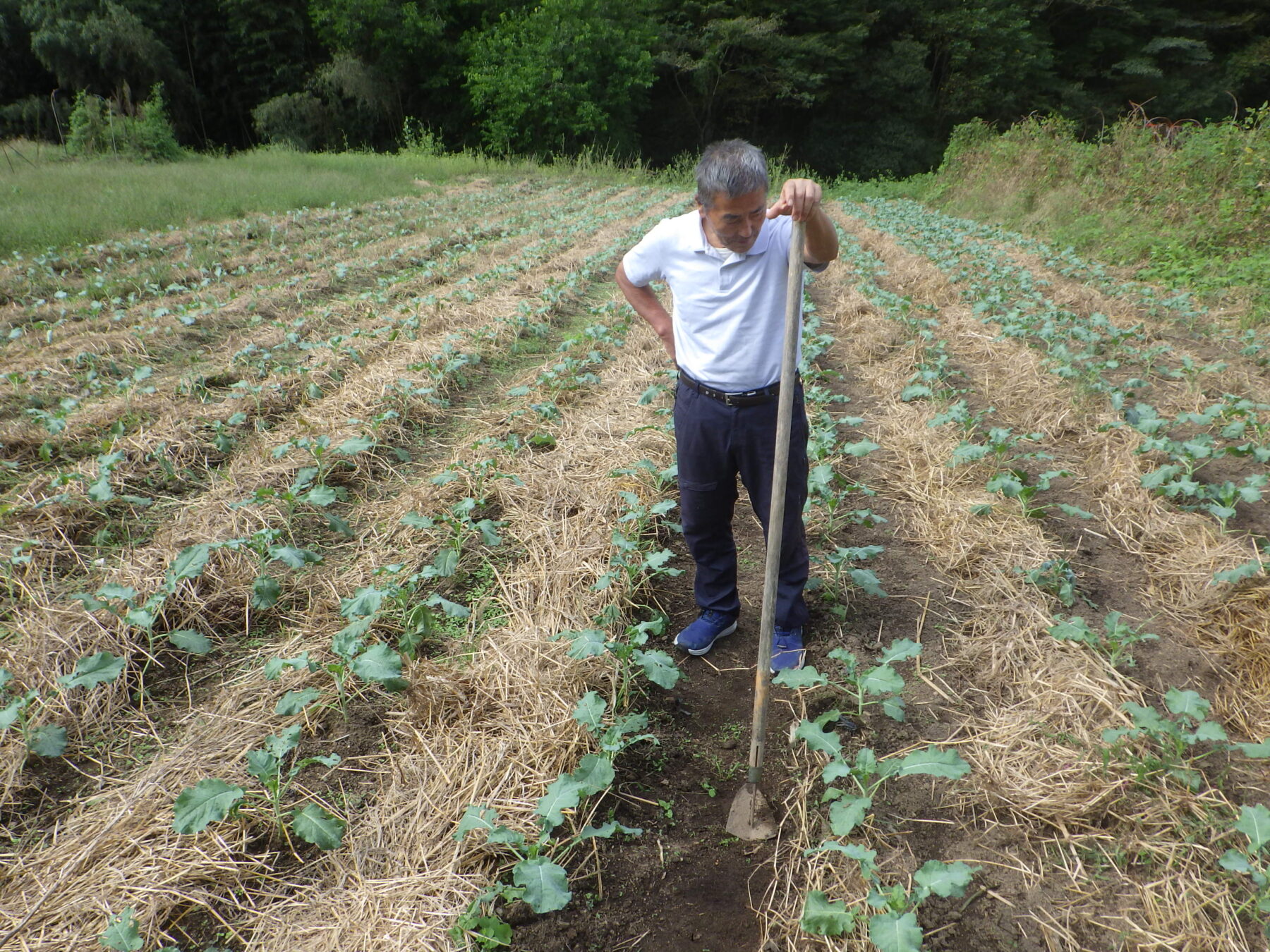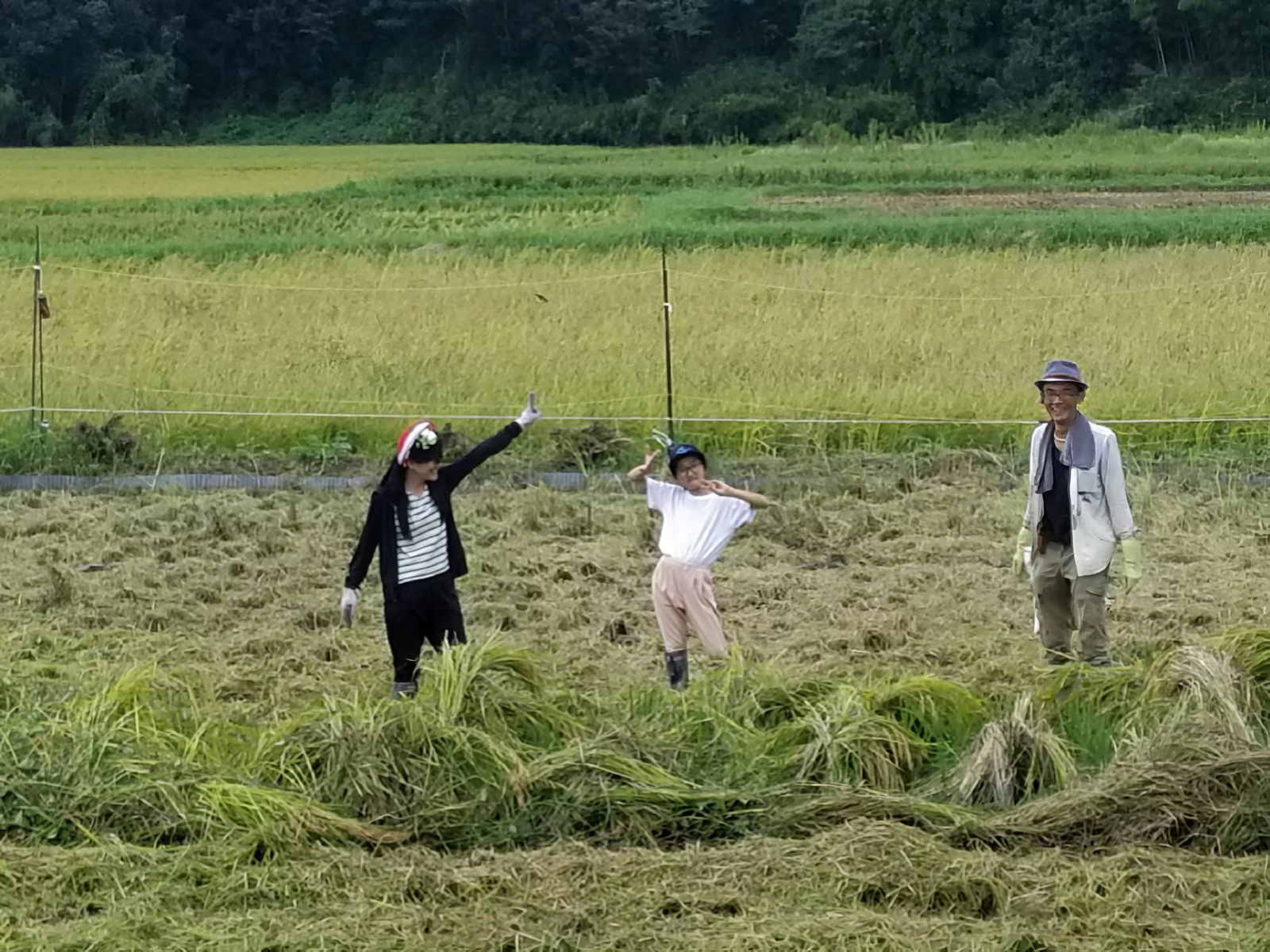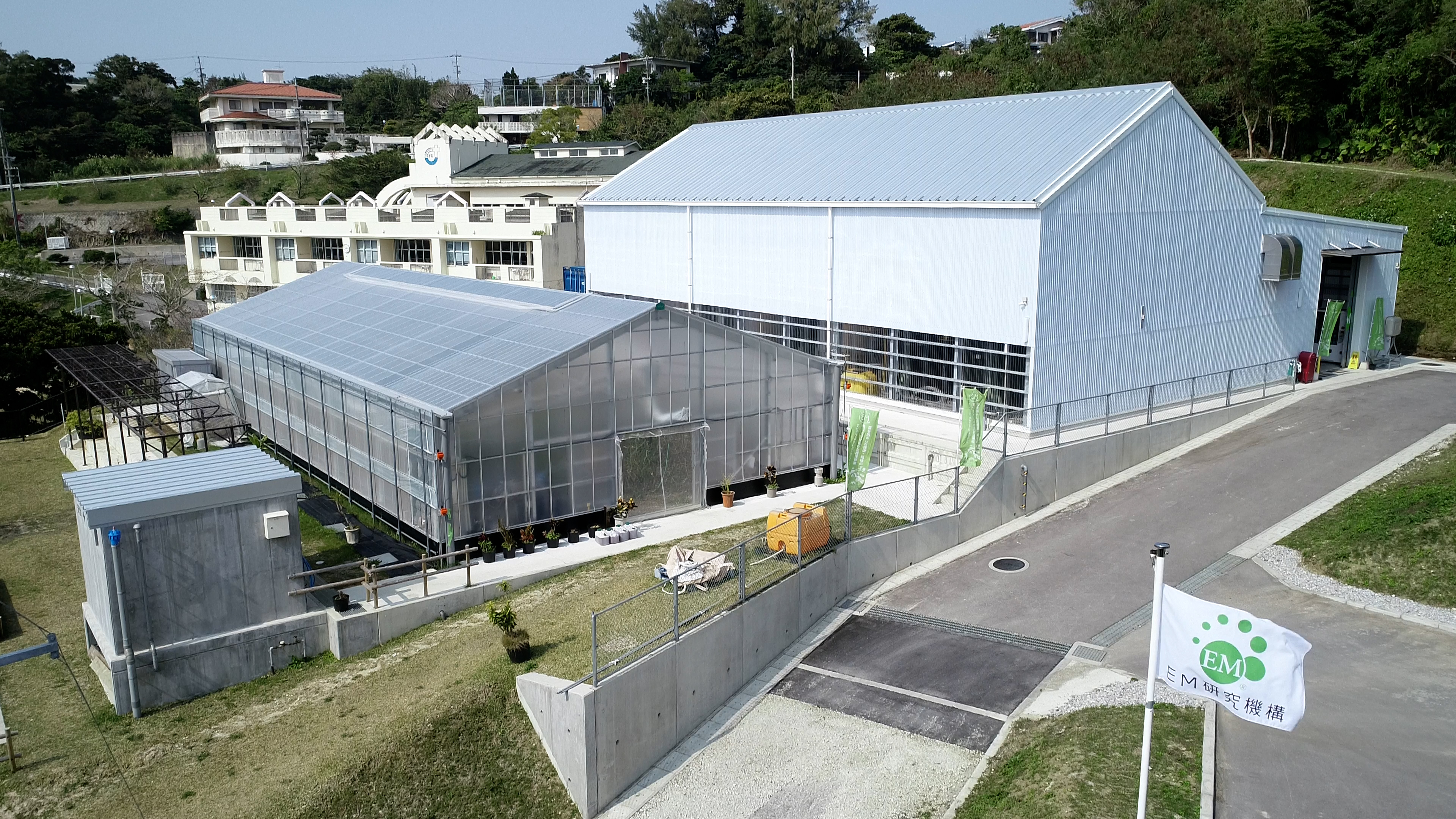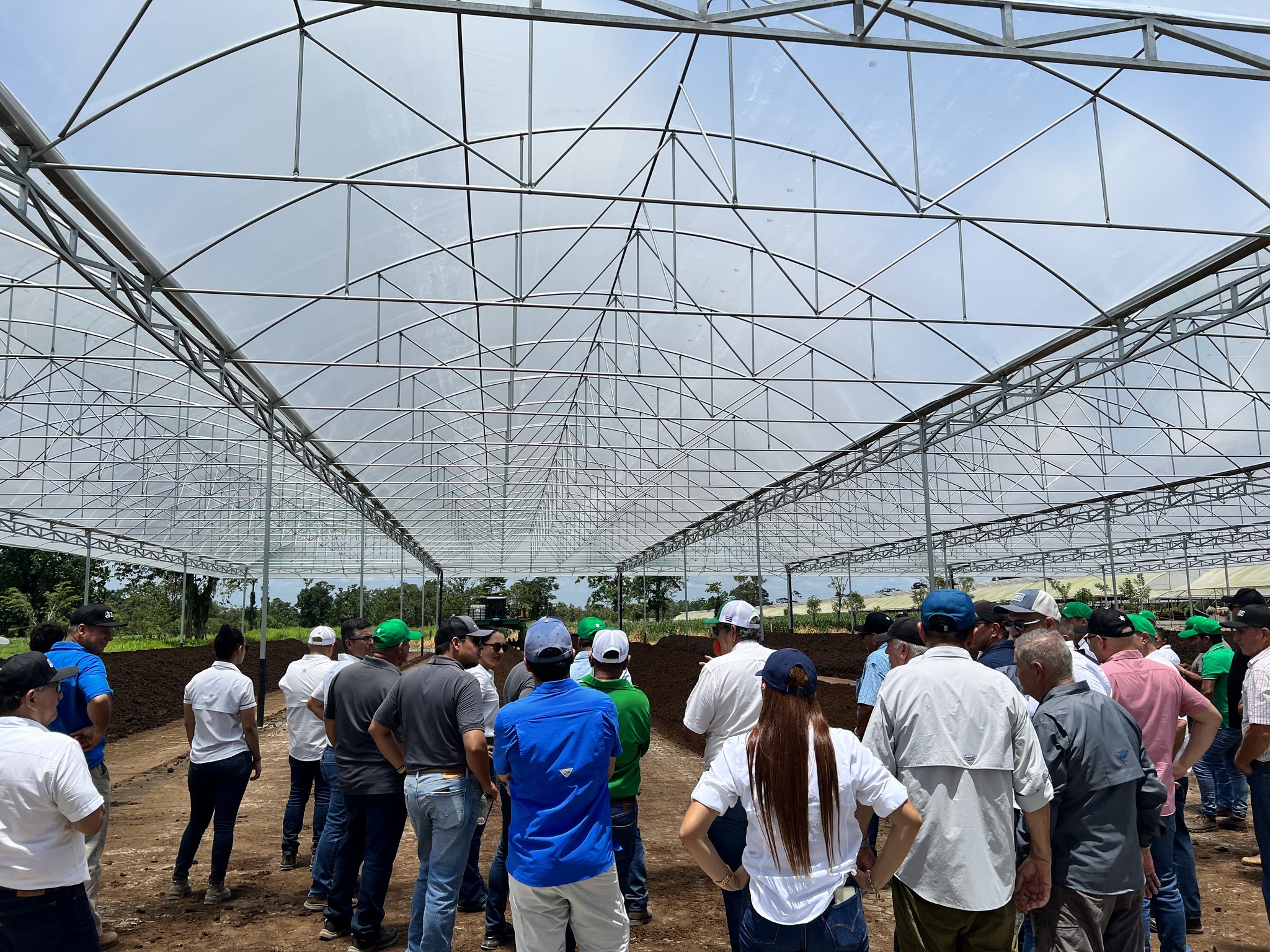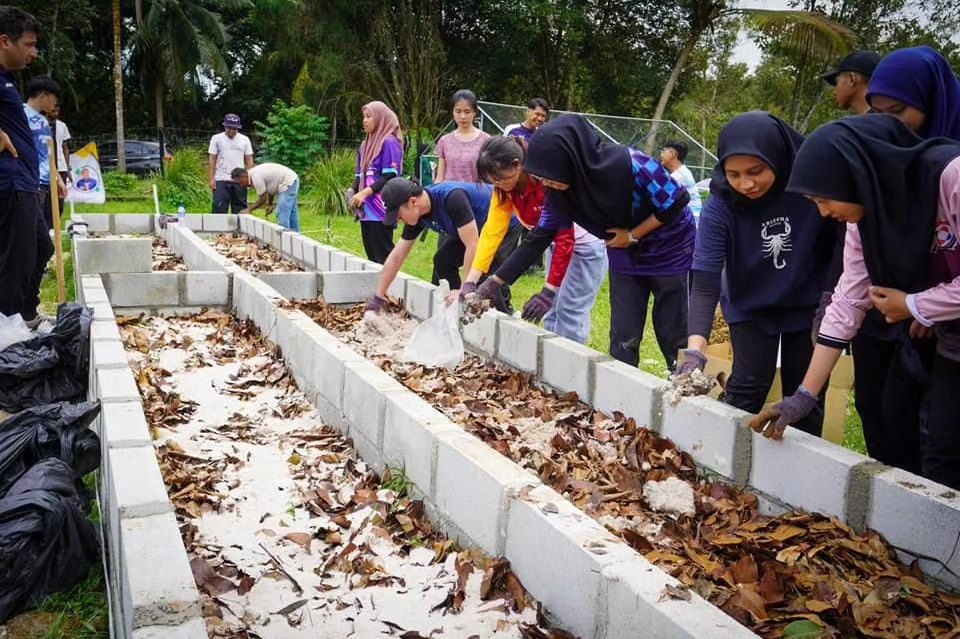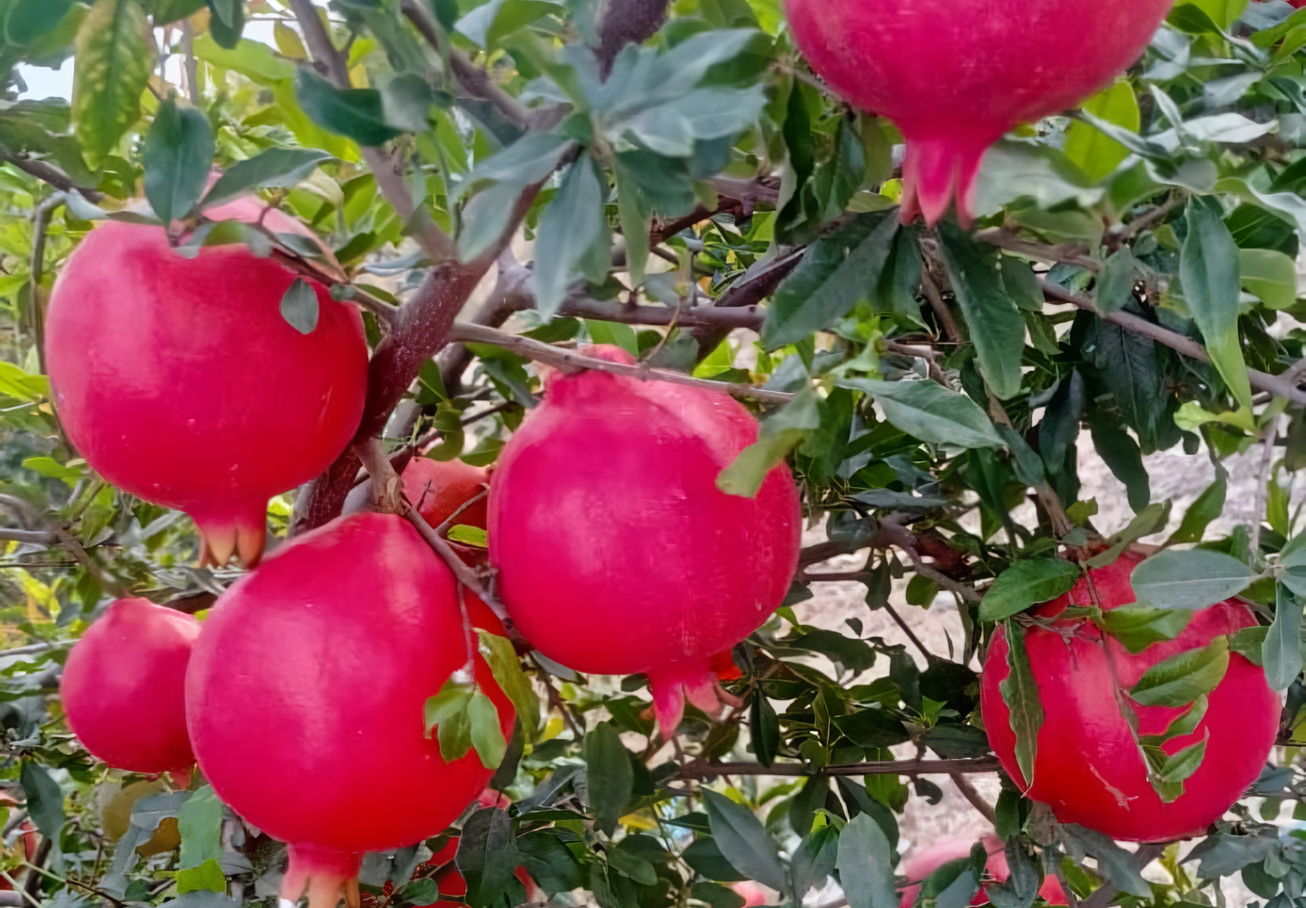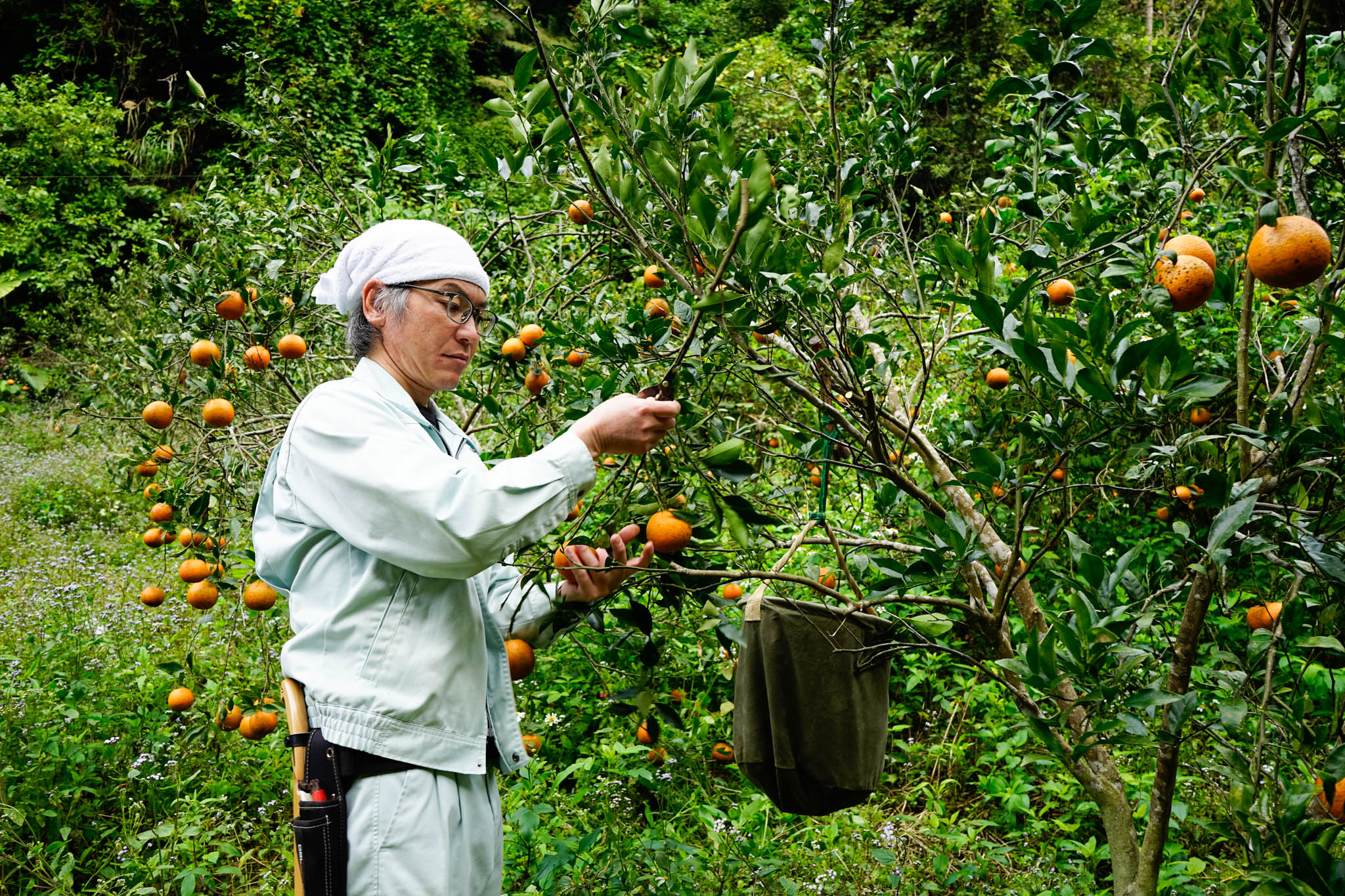Case Studies
Shrimp White Spot Disease Controlled
Ecuador

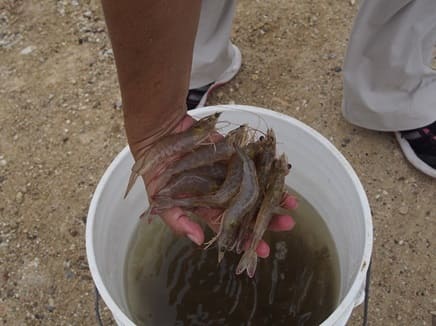
Background
Ecuador is located right on the equatorial line and it is famous for its Galapagos Islands rich in nature
and unique flora and fauna. The beginning of the EM Technology application on Shrimp farming in Latin America started in Colombia and Ecuador.
In 1997, graduates from the EARTH University founded a company called “AGEARTH Ecuador” to promote EM in Ecuador. They produce approximetaly 5,000L EM-1 monthly and their business is still growing.
Shrimp farming industry in Ecuador is centered in Guayaquil city, a coastal area that developed as the hub of business distinguished by the qualities of a delta area and abundant forest of mangroves.
This is the perfect environment for growing shrimp and Ecuador distinguished for being the 6th largest shrimp producer in the world and the largest in Latin America.
Ecuador is located right on the equatorial line and it is famous for its Galapagos Islands rich in nature
and unique flora and fauna. The beginning of the EM Technology application on Shrimp farming in Latin America started in Colombia and Ecuador.
In 1997, graduates from the EARTH University founded a company called “AGEARTH Ecuador” to promote EM in Ecuador. They produce approximetaly 5,000L EM-1 monthly and their business is still growing.
Shrimp farming industry in Ecuador is centered in Guayaquil city, a coastal area that developed as the hub of business distinguished by the qualities of a delta area and abundant forest of mangroves.
This is the perfect environment for growing shrimp and Ecuador distinguished for being the 6th largest shrimp producer in the world and the largest in Latin America.
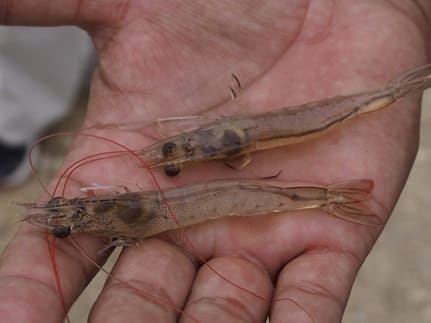
EM Used as Measures against Diseases
The introduction of EM started as a measure against a serious disease outbreak called White Spot Disease in 1999. The damage devastated 50% of the national production.
Since then, there are a lot of international regulations for applying antibiotics and the future of shrimp market was in despairing.
In response to this problem, Activated EM-1 (AEM) was introduced on a trial basis and able to crub the impact of this disease.
Fry shrimps are usually grown in anaerobic condition, in ponds without aeration equipment that provides oxygen. Therefore, water treatment is crucial.
Also, health management of the incubation stage and for fry shrimps are highly important.
Lately, there are other types of disease besides white spot known as EMS (Early Mortality Syndrome), a vibrio bacteria that is affecting all countries.
Chemical medicine that eliminates vibrio bacteria are used but with no effective results against EMS.
When shrimps are infected by EMS they can survive for ony few days.
If countermeasure against EMS is delayed, it is normal to lose the entire shirmp in one pond.
Therefore, currently we are conducting many experiments to increase the health condition and immue system of shirpms applying AEM to prevent EMS.
The introduction of EM started as a measure against a serious disease outbreak called White Spot Disease in 1999. The damage devastated 50% of the national production.
Since then, there are a lot of international regulations for applying antibiotics and the future of shrimp market was in despairing.
In response to this problem, Activated EM-1 (AEM) was introduced on a trial basis and able to crub the impact of this disease.
Fry shrimps are usually grown in anaerobic condition, in ponds without aeration equipment that provides oxygen. Therefore, water treatment is crucial.
Also, health management of the incubation stage and for fry shrimps are highly important.
Lately, there are other types of disease besides white spot known as EMS (Early Mortality Syndrome), a vibrio bacteria that is affecting all countries.
Chemical medicine that eliminates vibrio bacteria are used but with no effective results against EMS.
When shrimps are infected by EMS they can survive for ony few days.
If countermeasure against EMS is delayed, it is normal to lose the entire shirmp in one pond.
Therefore, currently we are conducting many experiments to increase the health condition and immue system of shirpms applying AEM to prevent EMS.
EM Technology to control Ammonia Level
Texcumar is a shrimp production company that produces approximately 100 million fry shrimps.
They collect eggs from adult shrimp and raise them for 20 – 25 days till they become fry shimps, then ship out to shrimp farmers.
During this growing stage, shrimps are fed with phytoplankton, zooplankton and formula feed.
In a limited tank space growing big amount of young shrimp, organic matters, such as feed waste, shed shell and excrements will gradually accumulate. In order to reduce the concentration of ammonia, they use AEM every day to control the quality of water.
The manager, assures that without EM he cannot reduce the concentration of ammonia. Now, quality of water is stable and shrimps are healthy.
Texcumar is a shrimp production company that produces approximately 100 million fry shrimps.
They collect eggs from adult shrimp and raise them for 20 – 25 days till they become fry shimps, then ship out to shrimp farmers.
During this growing stage, shrimps are fed with phytoplankton, zooplankton and formula feed.
In a limited tank space growing big amount of young shrimp, organic matters, such as feed waste, shed shell and excrements will gradually accumulate. In order to reduce the concentration of ammonia, they use AEM every day to control the quality of water.
The manager, assures that without EM he cannot reduce the concentration of ammonia. Now, quality of water is stable and shrimps are healthy.
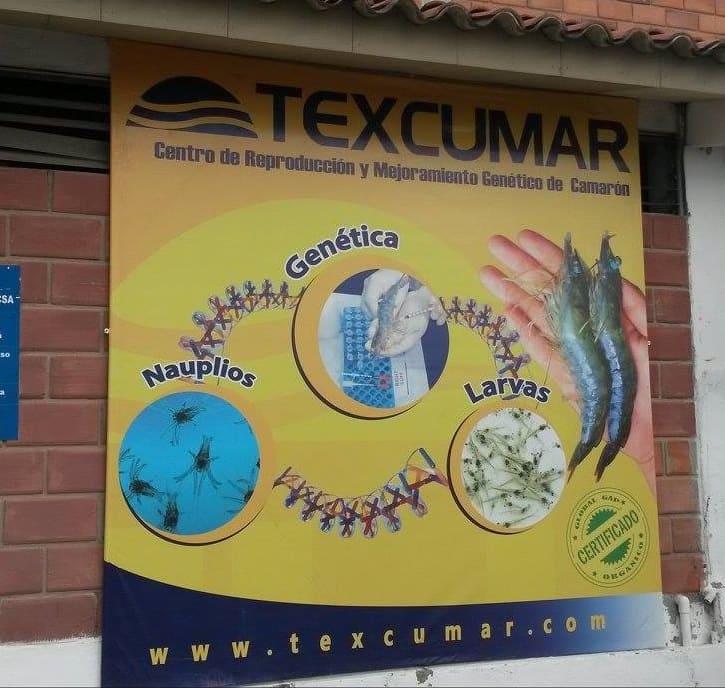
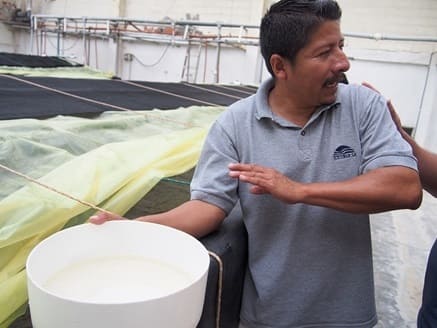

EM Technology Improves Water Quality
Aquaculture farms in Ecuador make use of the mangrove and natural terrain.
Thus, the growth density is lower compared to the farms in Southeast Asian countries.
Each pond is quite large and shrimps are grown in close to natural environment.
Management of water is done by:
1. Draw water from the mangrove forest to the intake pond.
2. Draw water into the farming ponds using the difference in height.
3. Harvest of shrimp is done while draining the water, and the water will flow back to the mangrove forest.
A shrimp farmer located in Guayas prefecture, owns 17 ponds of farm, each pond is around 7-10ha.
Before releasing the shrimp larvae into the pond, they ferment chicken manure or other organic material with AEM for two days and then put them into the pond to multiply the plankton. This is a unique method since standard method usually ferments organic matter with EM Bokashi.
The manager trusts that using EM improves water quality as well as promoting diversity of plankton and the health of shrimp.
Aquaculture farms in Ecuador make use of the mangrove and natural terrain.
Thus, the growth density is lower compared to the farms in Southeast Asian countries.
Each pond is quite large and shrimps are grown in close to natural environment.
Management of water is done by:
1. Draw water from the mangrove forest to the intake pond.
2. Draw water into the farming ponds using the difference in height.
3. Harvest of shrimp is done while draining the water, and the water will flow back to the mangrove forest.
A shrimp farmer located in Guayas prefecture, owns 17 ponds of farm, each pond is around 7-10ha.
Before releasing the shrimp larvae into the pond, they ferment chicken manure or other organic material with AEM for two days and then put them into the pond to multiply the plankton. This is a unique method since standard method usually ferments organic matter with EM Bokashi.
The manager trusts that using EM improves water quality as well as promoting diversity of plankton and the health of shrimp.
